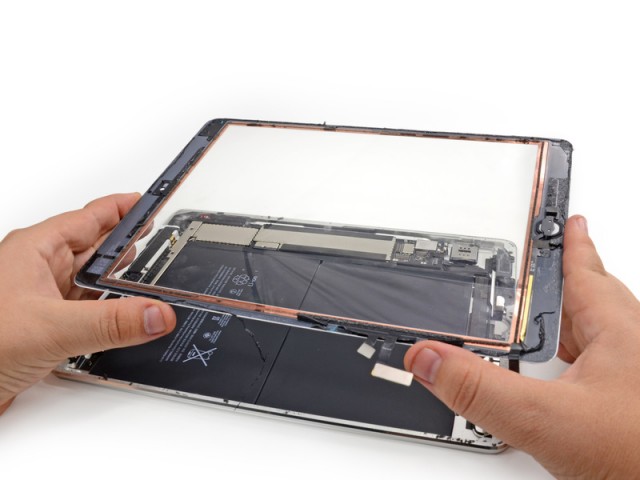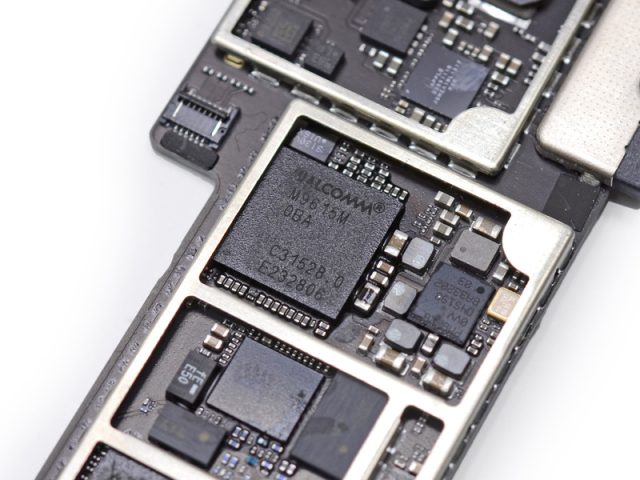
The iPad Air has only just come out, but the teardown artists at iFixit have already broken the device down into its component parts and assigned it a low repairability score.
The thinner, lighter iteration of the full-size iPad uses a much smaller battery than the old Retina iPads, 32.9WHr down from 43WHr last year. Apple is promising similar 10-hour battery life in the Air, which means that Apple's new components are much more power efficient than before. The Retina iPads' notoriously long charge times should also be reduced in the new model. That battery is glued down pretty thoroughly, making replacement difficult-to-impossible for end users.
The other system components in the iPad Air are substantially similar to those found in the iPhone 5S, with a couple of notable exceptions. For one, while the phone and tablet share the A7 SoC and 1GB of RAM, the version in the iPhone 5S is a stacked package-on-package (PoP) design that stacks the RAM directly on top of the SoC and binds them together; in the iPad Air, they're two separate chips.
The cellular chips in the iPad Air are also similar to the iPhone's. The iPad Air uses the same Qualcomm WTR1605L transceiver to increase the number of wireless bands the tablet can connect to and a Qualcomm MDM9615M LTE processor capable of 100Mbps LTE connections (as of this writing, iFixit has mis-labeled it as an MDM9616M). The new iPads also use the same nano-SIMs as the iPhone 5, 5C, and 5S rather than the larger micro-SIMs of older iPads and iPhones.

iFixit's other discoveries are in line with what Apple has announced: there are now two Wi-Fi antennas, enabling 300Mbps 802.11n connections (up from 150Mbps in older models), two speakers, and an M7 coprocessor like the one in the iPhone 5S. The full list of tiny touchscreen controllers and other chips is too long to reproduce here, but iFixit runs them down in exhaustive detail.
Unlike many other Apple devices (including the iPhones, MacBooks, and iMacs) the front glass layer of the iPad and the LCD layer aren't fused together, so breaking one doesn't necessarily mean you'll need to replace both. Given the drive toward thinness in the iPad Air (and the other benefits that reducing the gap between glass and screen produces, namely a more vivid display with better contrast), this is a surprising move, but this tidbit was the only positive thing iFixit had to say about the Air from a repairability perspective.
iFixit gives the tablet a predictably low two out of 10 on its repairability scale, citing the separation of the LCD and glass as a bright spot but docking it for using a gratuitous amount of glue. As in any highly integrated consumer electronics device, getting at and removing most of the components is pretty difficult, and end users will have an extremely hard time fixing anything that breaks.
We'll be procuring an iPad Air along with the rest of you today, and our full review will run early next week.
reader comments
84